Nota bene: For optimal pleasure The Ruggist suggests listening to Frédéric Chopin’s ‘Fantaisie Impromptu’ while reading this article. If you can tell me how and why this relates to the article, you can win a prize! Details below*.
‘How many striped rugs have we seen before?’ begins REUBERHENNING’s Birgit Krah as if she was the one asking the questions. ‘Some are nice, a lot are boring, but stripes have always been fascinating to me. It’s a timeless pattern found in fashion, furniture, and art, even in nature. Never out, always in, the design remains classic and modern, conservative yet freaky all dependant upon how you wear it or [as is the case with carpets] which apartment we put it in.’
And so begins my conversation with REUBERHENNING regarding their carpets, their aesthetic vision, and as Franziska Reuber (née Henning) – the primary designer/artist and one half of the eponymously named firm – states; ‘We are a label dedicated to what matters most to us, just creating beautiful rugs.’
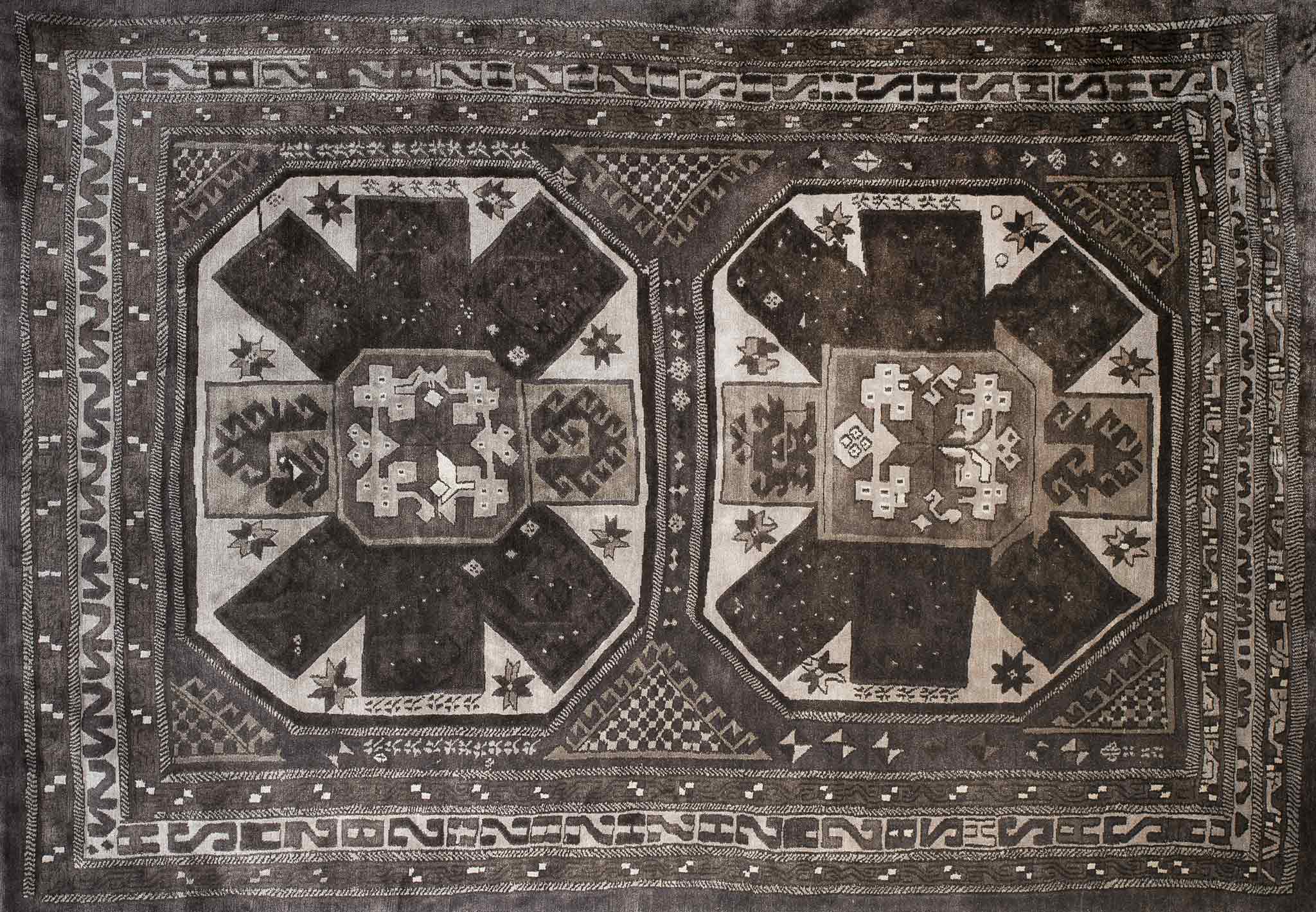
‘REUBERHENNING’ was founded in 2007 by Franziska Henning and Thorsten Reuber following what had been an eight (8) year courtship between Franziska and carpet design. In 1999 the then art student planned to design a rug inspired by fond memories of much time spent in her grandmother’s garden. So important and unwavering was the quest to bring her childhood recollections into the confines of her own home that she ended up traveling far and wide, finally finding a small workshop in Iran to produce her first handmade rug. Thus what began with the story of a secret garden has evolved into an entire series of poetic images available in the form of beautiful carpets.
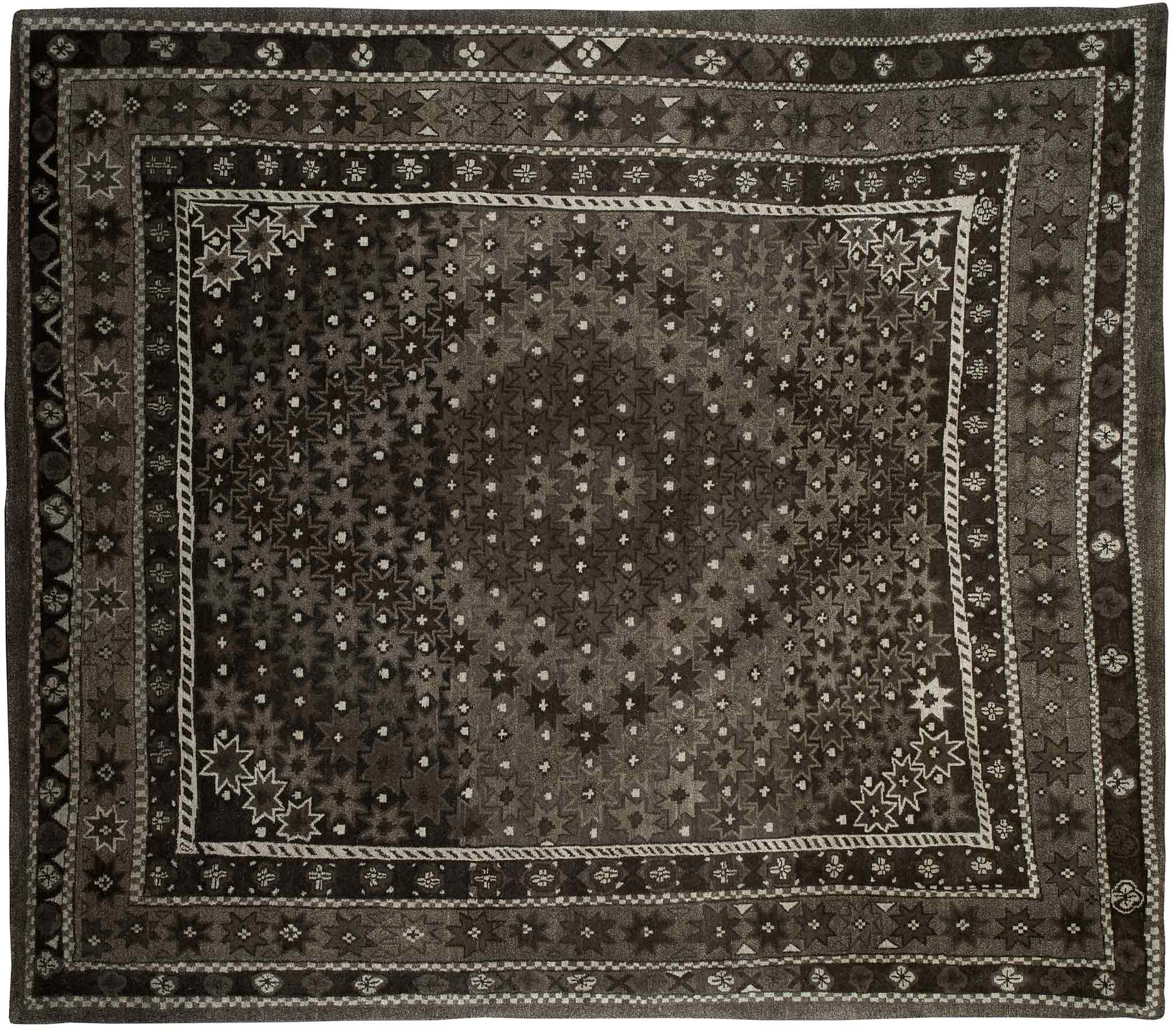
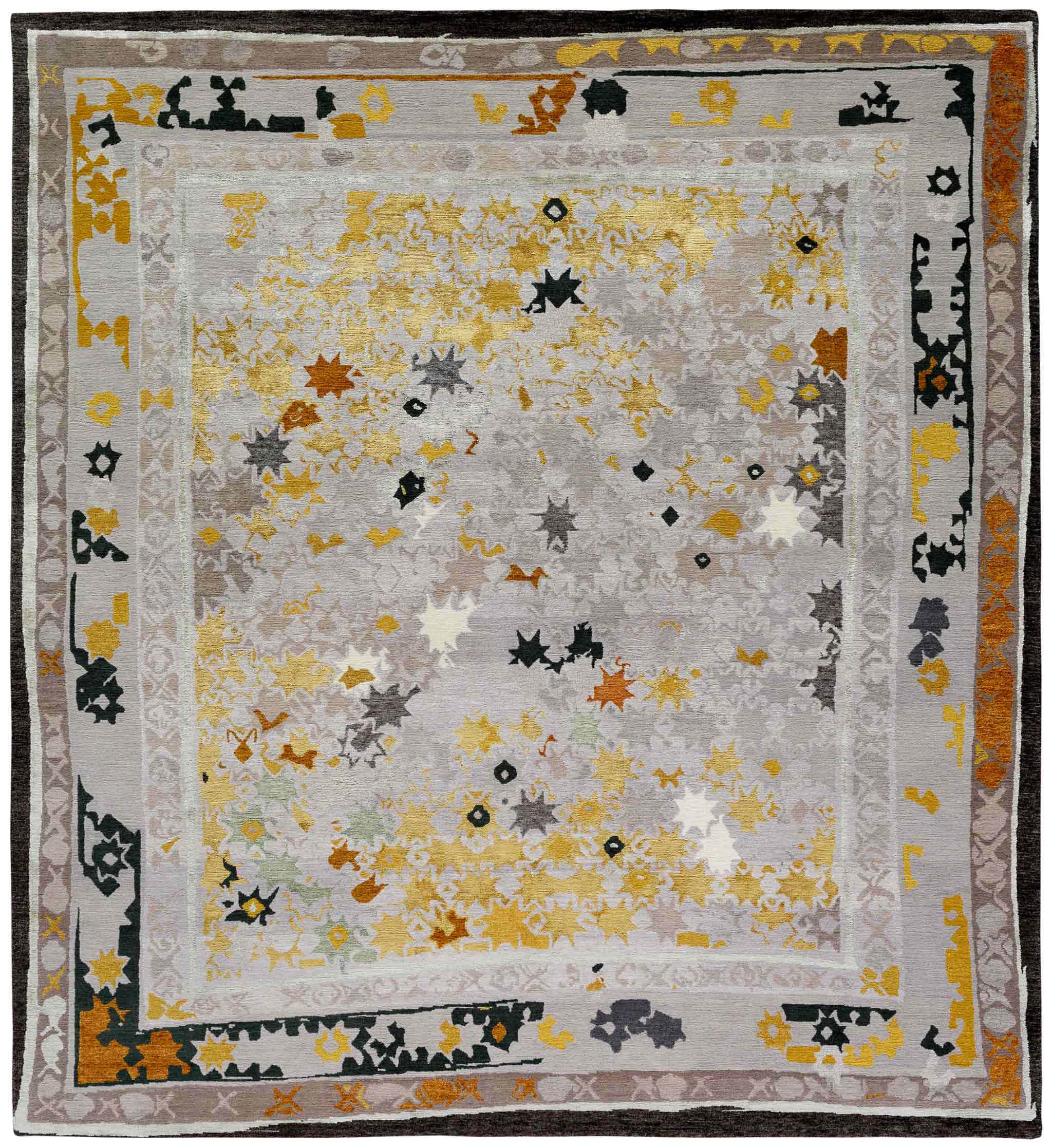
The concept of poetry permeates the entirety of REUBERHENNING’s collections, perhaps none more so than the romantically named ‘Lost in Translation’. Early works include ‘Casablanca Phoenix’ and ‘Casablanca Stars’, both beautiful carpet designs imagined through the black and white celluloid filter of the well-known film by the same name. Others such as ‘Karaoke Gold’ and perhaps my favourite of the group ‘Fantaisie Impromptu’ further the homage like qualities of this collection. Birgit continues explaining ‘[It began with] a classical Anatolian rug from the 19th century that we had redrawn with all of its ‘mistakes’ and ‘stretches’, but in only greys like the film. Here we have the star [both literally and figuratively]; a very old symbol that everyone can relate to. It is modern and classical at the same time… Did not I say the same about the stripes before? See. Life is simply the same wherever you turn.’
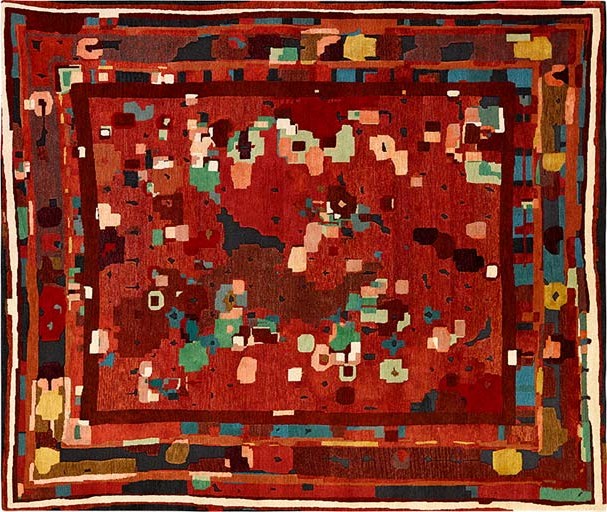
Speaking of the stripes, let us now return to the ‘Stripes’ collection and the relative mastery of what Birgit described as ‘conservative yet freaky all dependant upon how you wear it.’ Wearing stripes conjures one name top of mind, none other than iconic British designer Paul Smith; and I do not think it presumptuous to compare the two. Just as Mr. Smith‘s stripes can be worn uptown or down, so too are the Stripes carpets of REUBERHENNING just as ‘amazing with modern interiors or with antiques.’ – that according to Birgit. ‘Why not begin with something existing [striped designs] rather than coming up with a new idea.’ she begins, explaining the origin of the Stripes collection. ‘Of course you have to make the new version more cutting edge, or show it in a different way, or even make fun of it…. What interested me in the stripes was to make that simple design more complex.’
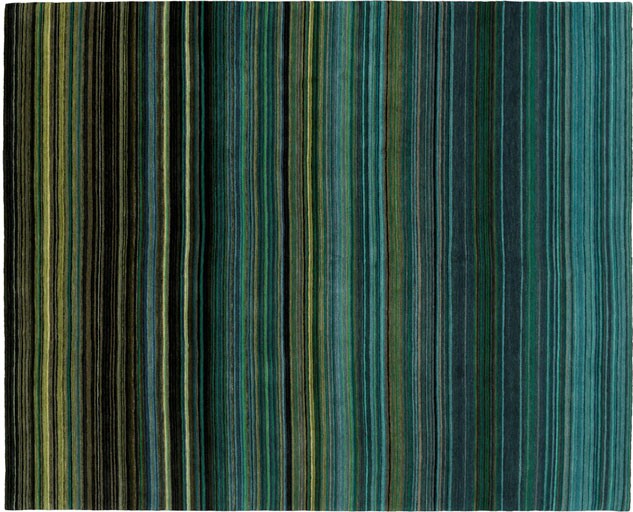
To do so, REUBERHENNING employed the use of, and I’m quoting, a ‘tasteless computer program’ that, unlike you or I didn’t have preformed preferences toward colour and as a result produced unbiased combinations that made the design ‘fresh and surprising.’ And, as Birgit asks ‘Who does not want to be surprised?’
‘If you buy a carpet of this quality, one you will have for your lifetime, you have the chance to discover – perhaps years later – colour combinations that you have not seen before.’ Birgit says, recalling the one of the qualities, complexity – in whatever form, most rug aficionados cherish. ‘But wait!’ she interjects, ‘The number of colours is another reason for the beauty of our Stripe carpets. We put forty to seventy (40-70) colours in them. Even if some of the tones have just a minute variance, it makes all the difference in the finished carpet.’
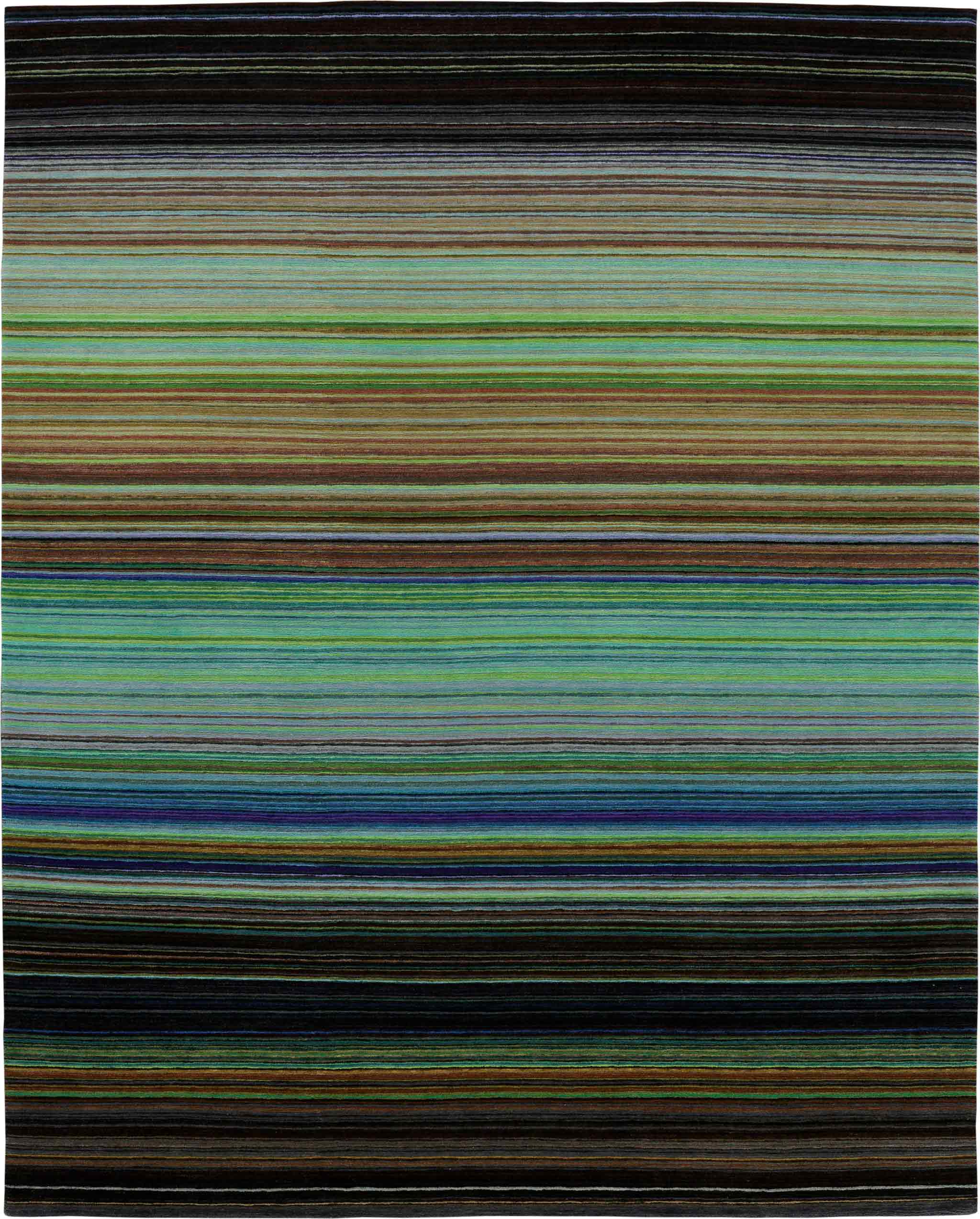
‘To me one of the greatest features of REUBERHENNING’s carpets is their cutting edge audacity done with the most exacting standards.’ begins Alberto Levi, the renowned and exceptionally discerning Milanese carpet and antique merchant, when asked about the collection. ‘I feel that the market has already a plentiful supply of neutral, earth toned, pastel shaded weavings to satisfy the demand for carpets that don’t interfere with the minimalist palette of today’s interiors. This long-lasting trend has encouraged us to literally strip off colour from carpets, making them more fabric-oriented, resulting in unique and often quite interesting textures. In doing so however, we are denying rugs of most of their greatest potential, which is to provide a chromatic resonance through the association of high quality materials – superior dyes and handspun and handcarded wool. Reuber Henning develops this association to its highest degree.’
This synergy between colour, design, superior quality, and an attention to detail best described by Alberto as ‘Germanic’ are the result of years of work and a ‘fascination with very high quality handknotted rugs’ according to Franziska. ‘For us a real carpet is not just one with a good design, it is also the manner of production that makes it complete. The sum of all of the handcraft that saturates our production brings with it a certain soul.’ Of course, ask any carpet maker of the qualities of their carpets and you may hear much the same. But to see, feel, and handle the carpets of REUBERHENNING is to verify everything Alberto, Birgit, and Franziska would have us believe: their carpets are sublime.
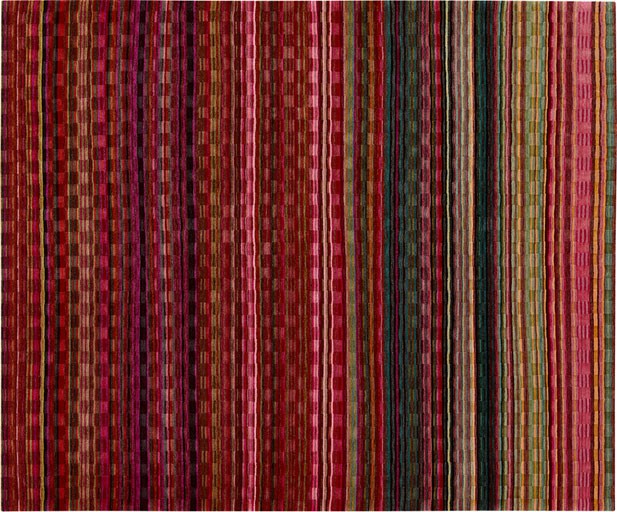
‘We use well-selected Tibetan Highland wool and Chinese silk. We mix materials, we focus on having the right abrash, and we use different dye techniques.’ Franziska continues, ‘We put an extreme focus on selecting colours to convey our REUBERHENNING style.’
It’s a style that manages to bridge modern and traditional in ways only a few rug companies care to muster. For example, if a rug is slightly irregularly shaped off the loom, it’s left that way (‘never cut’) as a reminder of the handcraft; the soul if you will. This quest for absolute quality extends so far as to utilize traditional Tibetan crossed-weaving, a more labour intensive method of weaving that has waned in use over the last decade; this, despite the fact of its superior epochian oriented qualities. Regardless, all of the various techniques are composed in a holistic manner, never overt nor in the face but rather as Franziska concludes ‘to the right degree in order to bring out the elegance and the best in the design.’

Design however is much like a fickle mistress, always requiring attention and new embellishments, and so for the next iteration of the collection, the simplicity of stripes met the simplicity of checkers because, as Birgit explains in German: ‘Gleich und gleich gesellt sich gern.’ or as it said in English: ‘Birds of a feather flock together.’ For design and style however, I prefer a slightly more literal translation: ‘Alike and alike go well together.’ Birgit once again explains ‘The checker is just a layer of different material we put on the stripes, that is all. At first, even rug connoisseurs have a hard time discerning what is happening with the rug. It has a [certain] Fata Morgana appeal. You see something but cannot figure out what it is.’
I take pause for a moment to interject that upon first glance I was one such carpet aesthete who failed to figure out how the carpet was made. Perhaps it was the excitement of the moment, a coy interest in engaging conversation, or even – though I would hate to admit it – a technical oversight. To me it is irrelevant. I know now, and the magical prestige of the moment is what captured my love of these carpets. But wait (again), there is more!
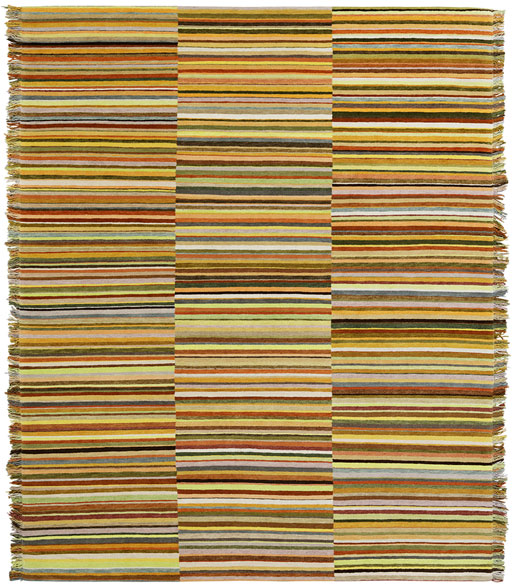
Speaking of the entire ‘Stripes’ collection, Alberto waxes somewhat poetic if not rhetorically: ‘What we have here is a carpet where design becomes a pure function of colour, where each variation in the chromatic juxtaposition creates a weaving with a distinct personality. Perhaps these will encourage people to look at carpets for what they truly are and not only for how well they can complement. Why should a high quality, handmade Tibetan wool and silk carpet inevitably have to match the machinemade cotton fabric of a sofa and not the other way round?’
The Stripes Collection will be featured at the Alberto Levi Gallery during his ‘Fuorisalone’ event taking place 12-17 April 2016 during the ‘Salone del Mobile’ in Milan. In addition to ‘Stripes’ and ‘Stripes-Checker’, Alberto will also be showing the next, next iteration: ‘Stripes-Left Over Yarn’. Birgit explains one last time, ‘They are all one of a kind because we use just left over yarn and the weavers are allowed to choose the rhythm themselves. The thickness of the stripes is left to chance, so the design is random and even crazier. Three (3) weavers work side by side on the carpet, and they each have their own section , each with its own personality.’
In doing so, REUBERHENNING brings us somewhat poetically back to where we began, creating a carpet made from leftover materials, reminiscent of classical Iranian stripe rugs, or perhaps more relevantly Tibetan pangden fabrics; the latter of course having inspired numerous carpet designs throughout the years. Obviously though, it’s a new more cutting edge version shown it in a different way, and it’s even fun with coloured wool fringe on the sides as opposed to the ends. To paraphrase Birgit ‘Design is simply the same wherever you turn.’ Enjoy!!
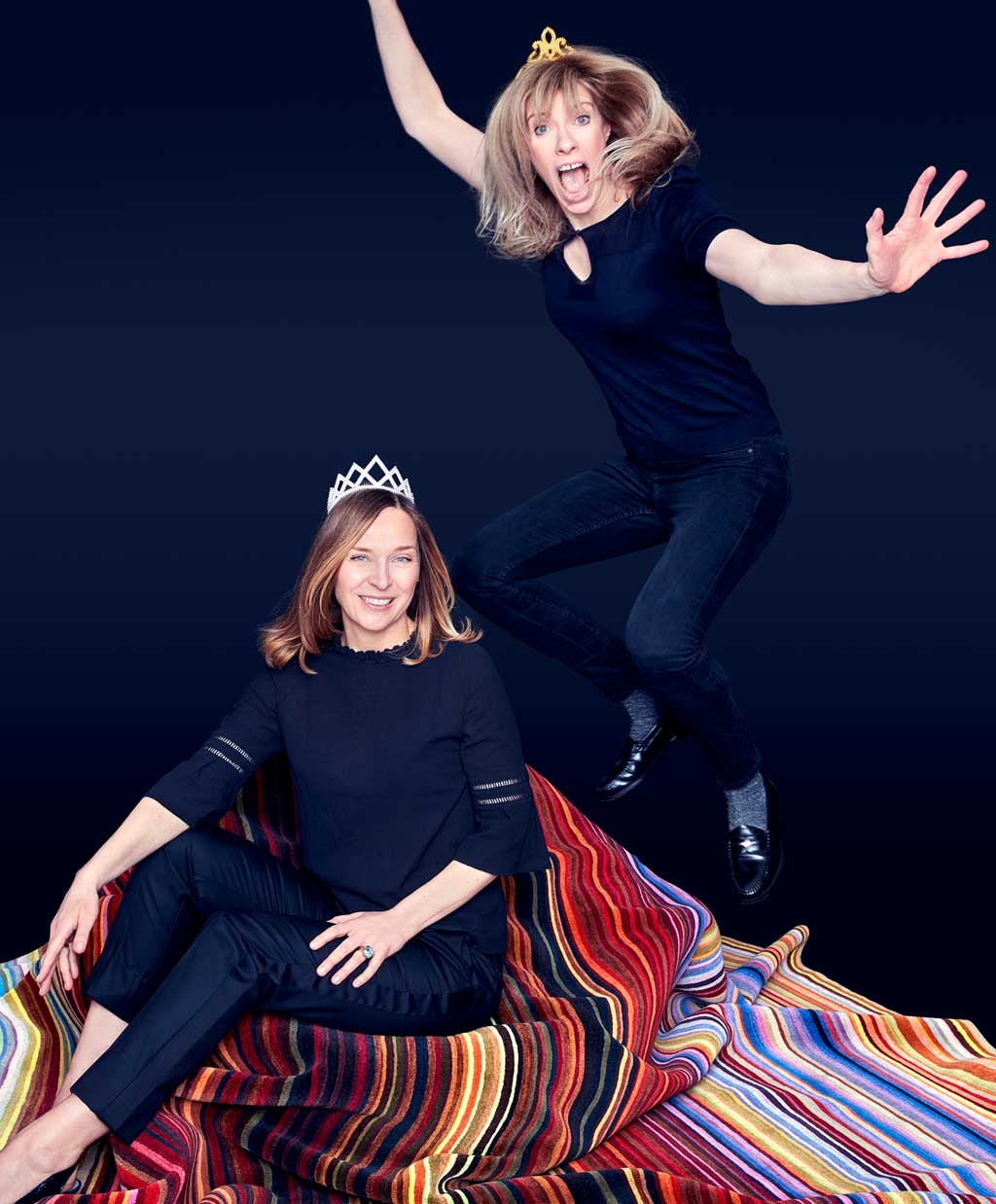
REUBERHENNING carpets are priced appropriately for their supreme level of quality and attention to detail. For more information and pricing, you may contact REUBERHENNING in Berlin, any one of their many exemplary European and Global stockists, or (hopefully) finer North American showrooms in the near future.
*Prize details: To enter, please email your answer to the following question to The Ruggist no later than 30 April 2016: ‘How and why is Chopin’s ‘Fantaisie Impromptu’ related to this article? The winner will be selected randomly from all correct answers and will receive six (6) months complimentary advertising on The Ruggist.



